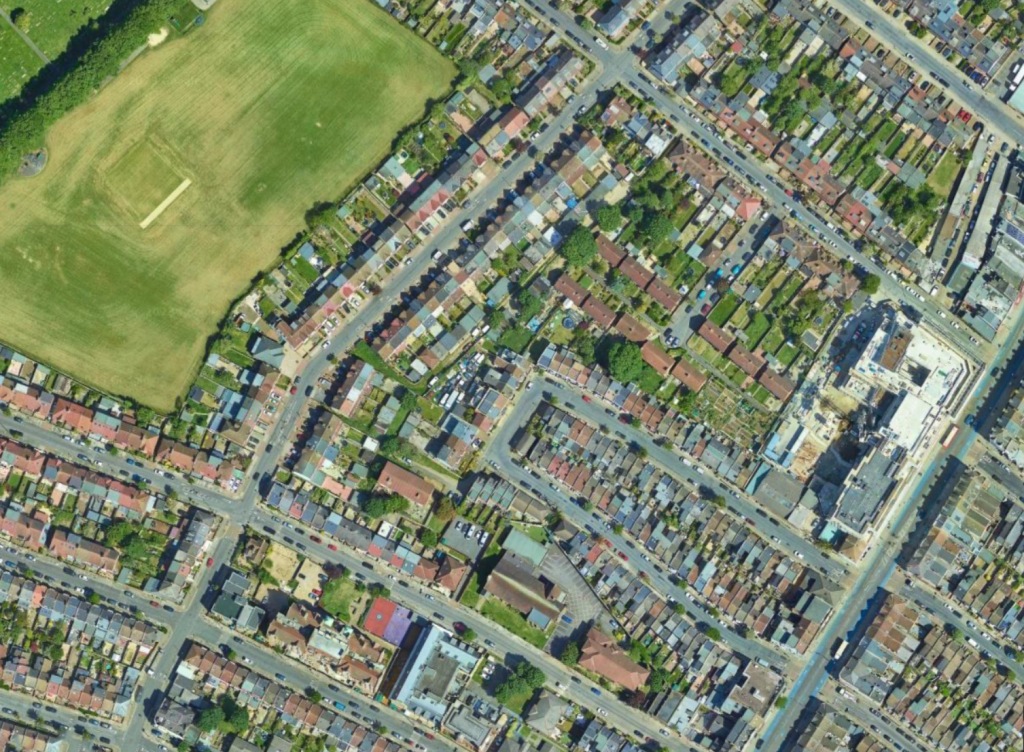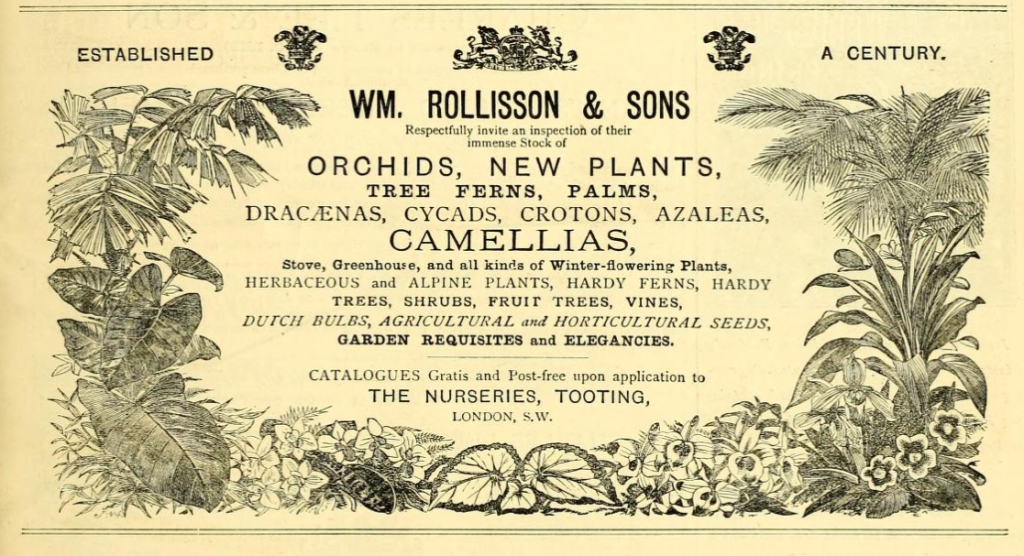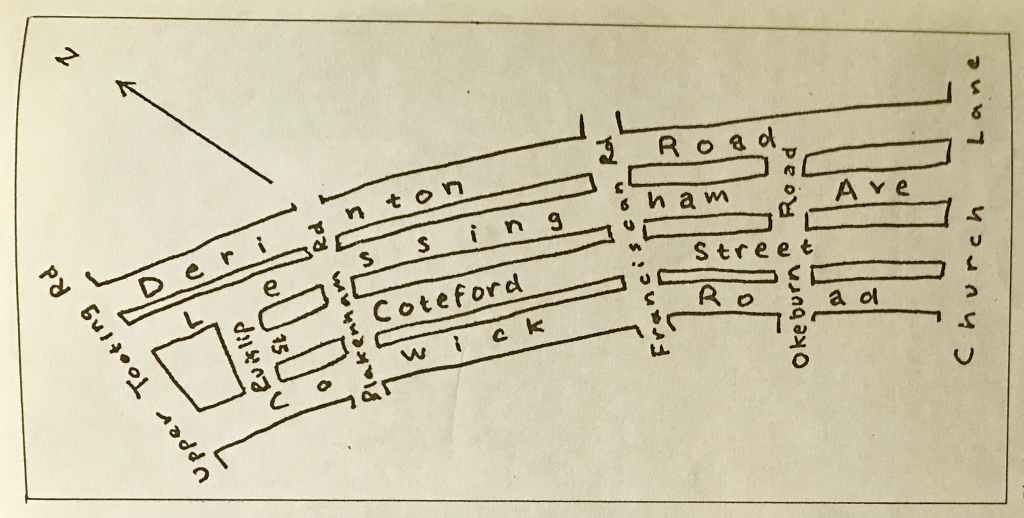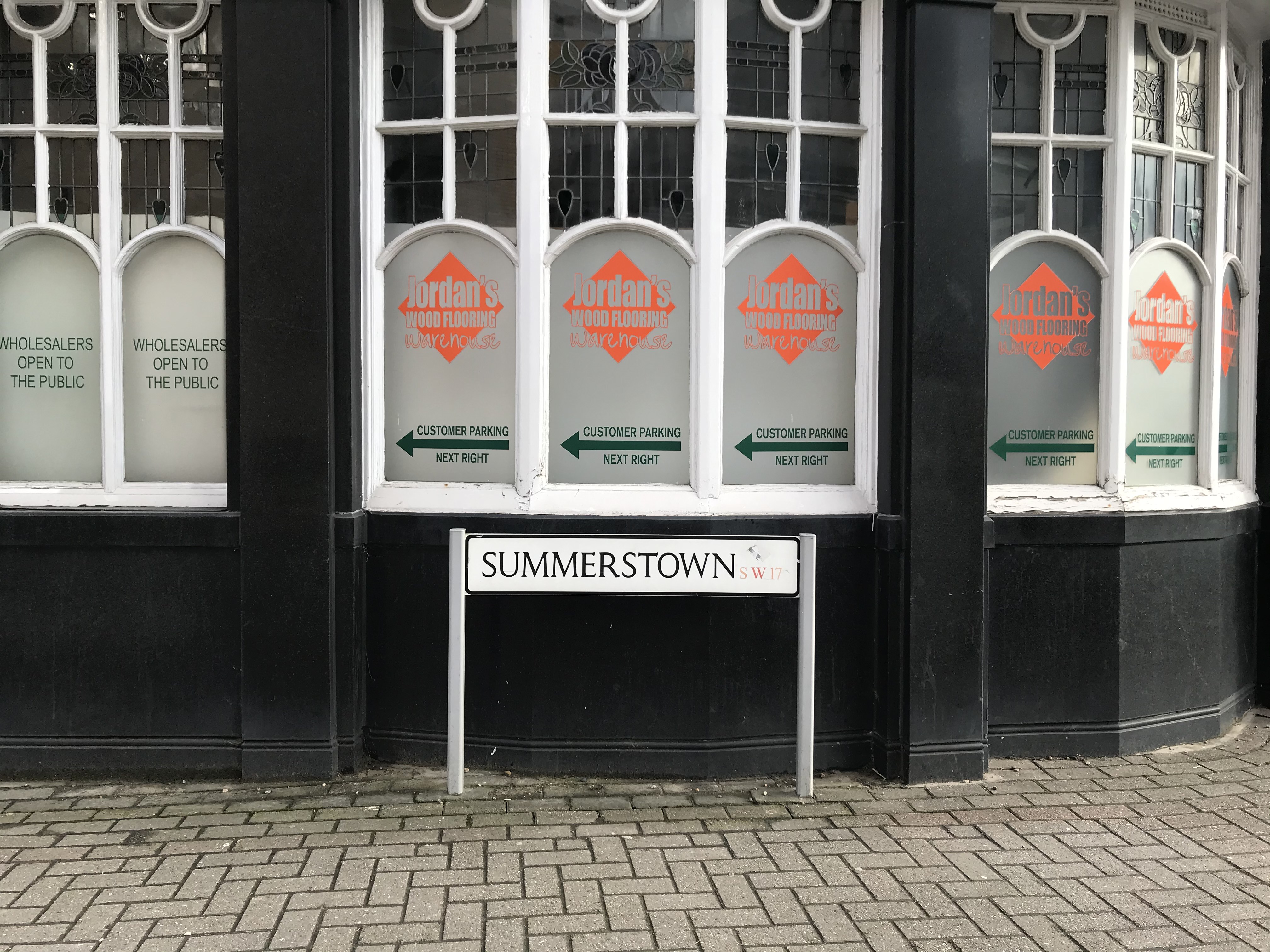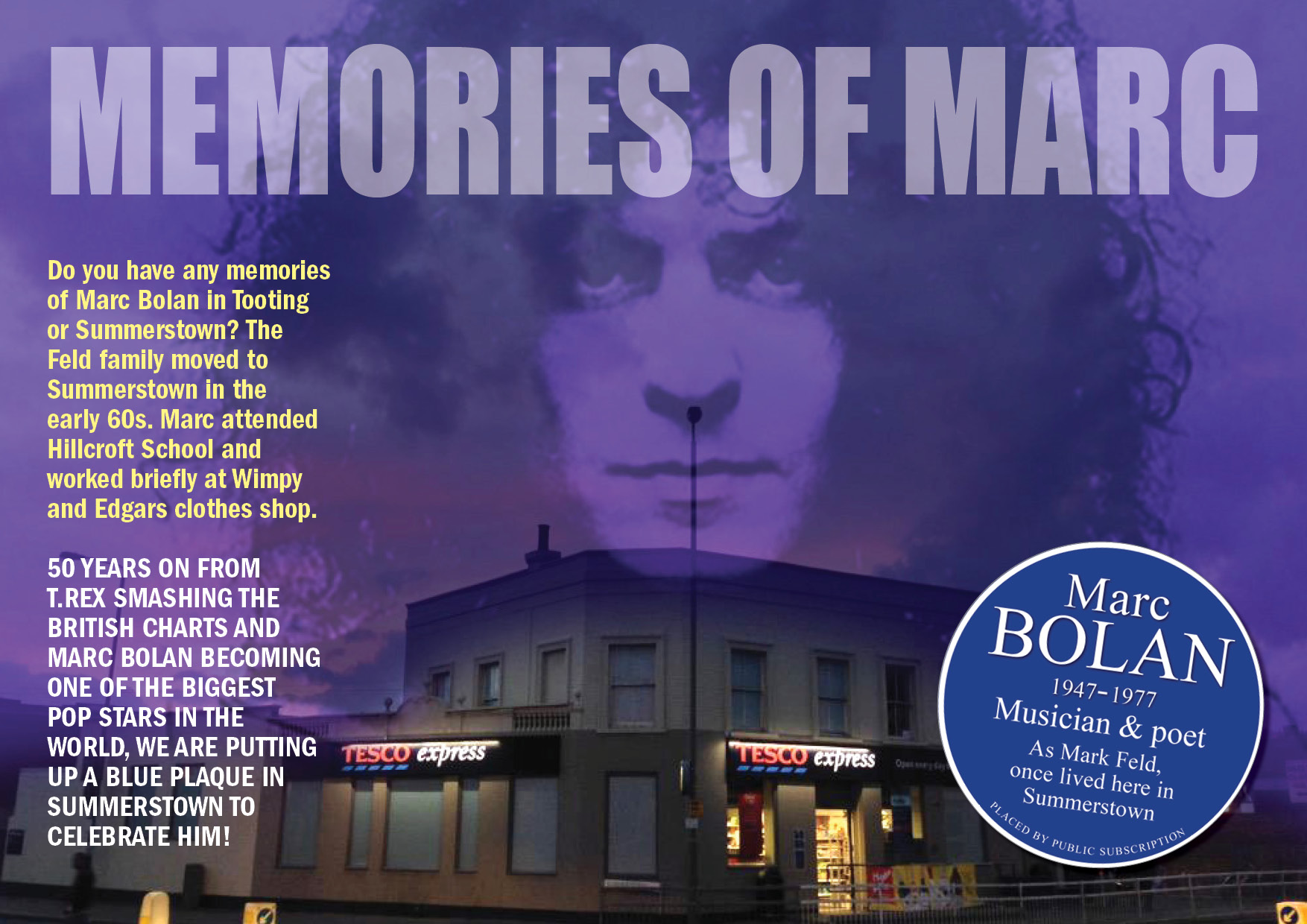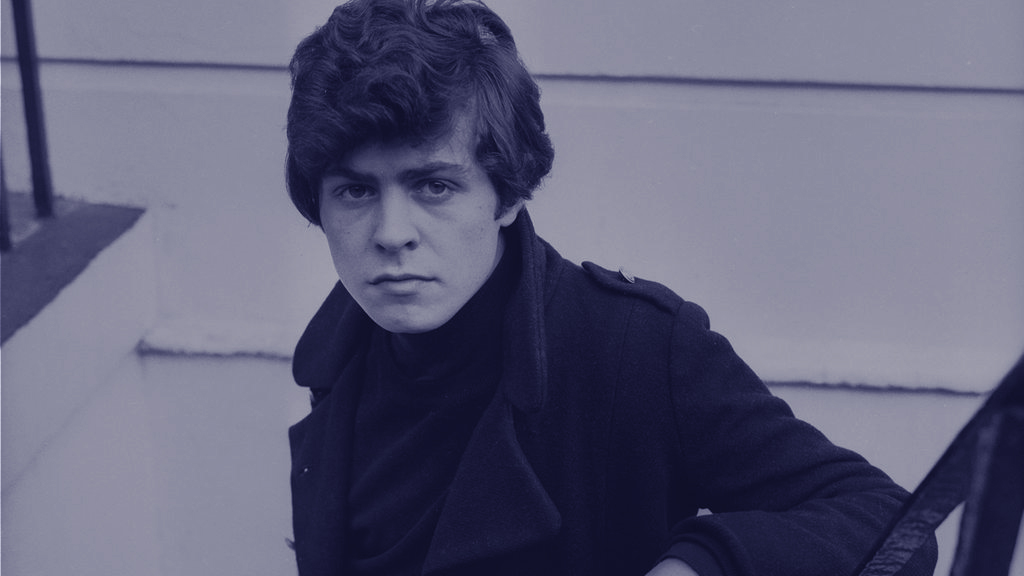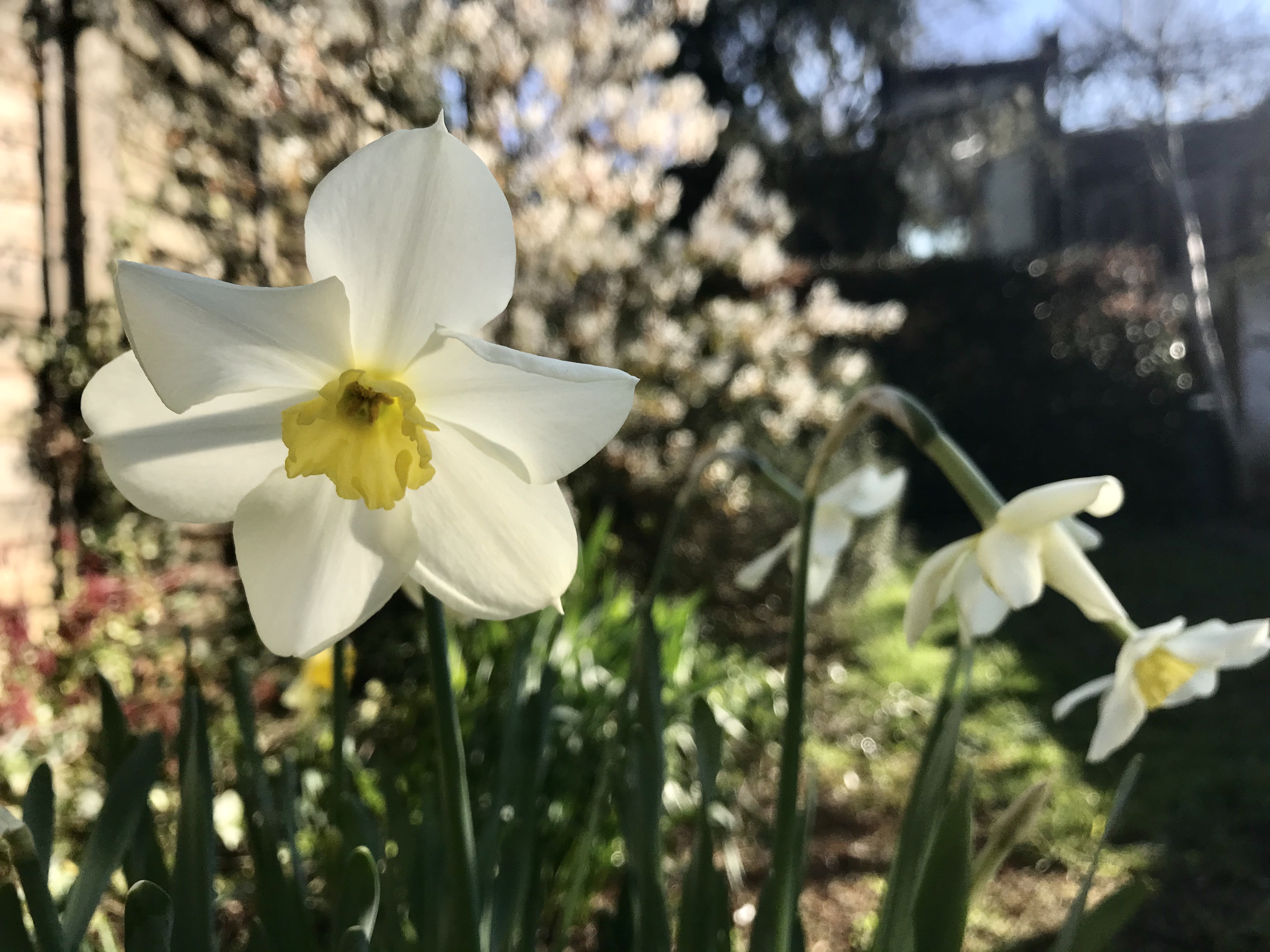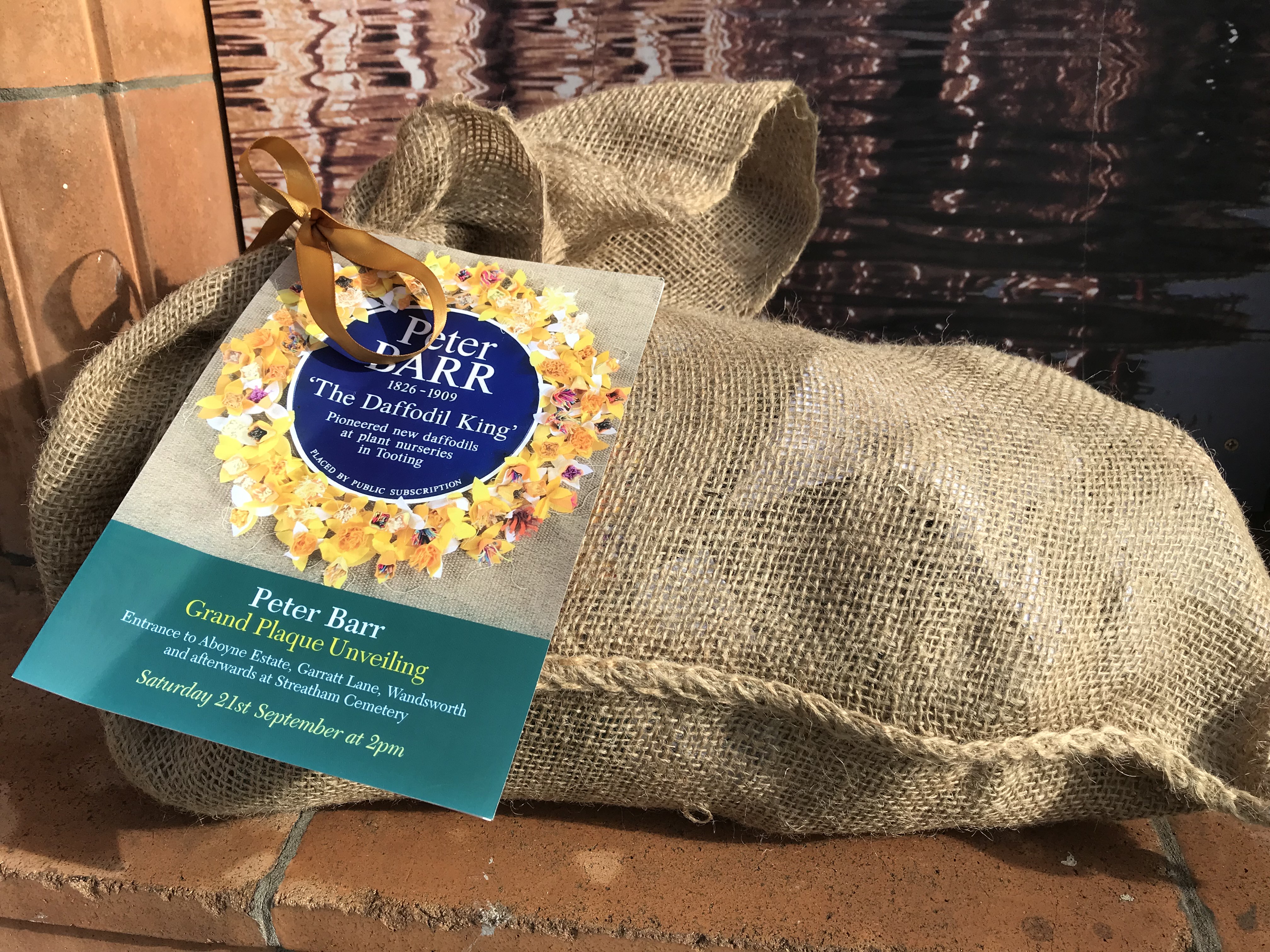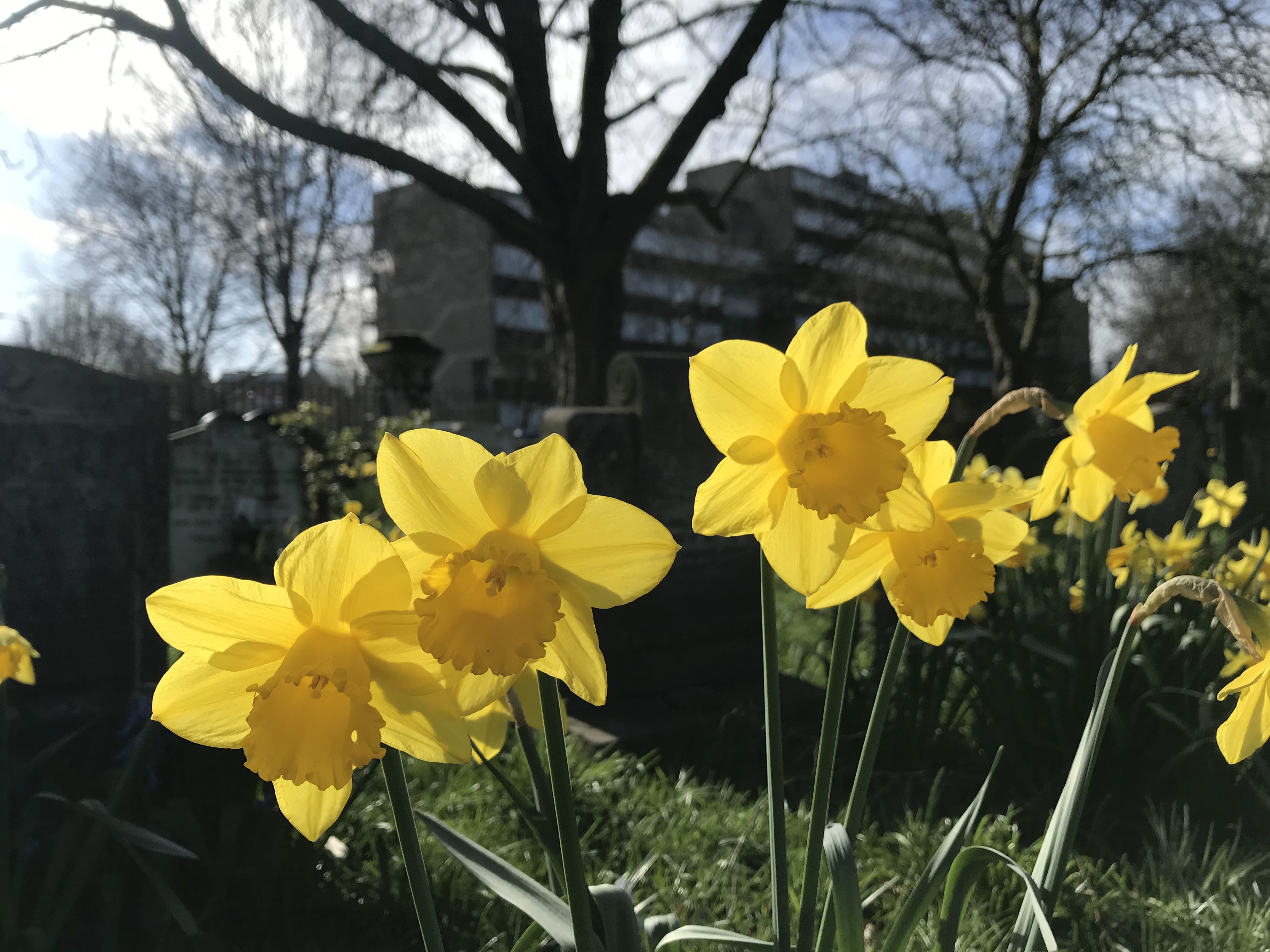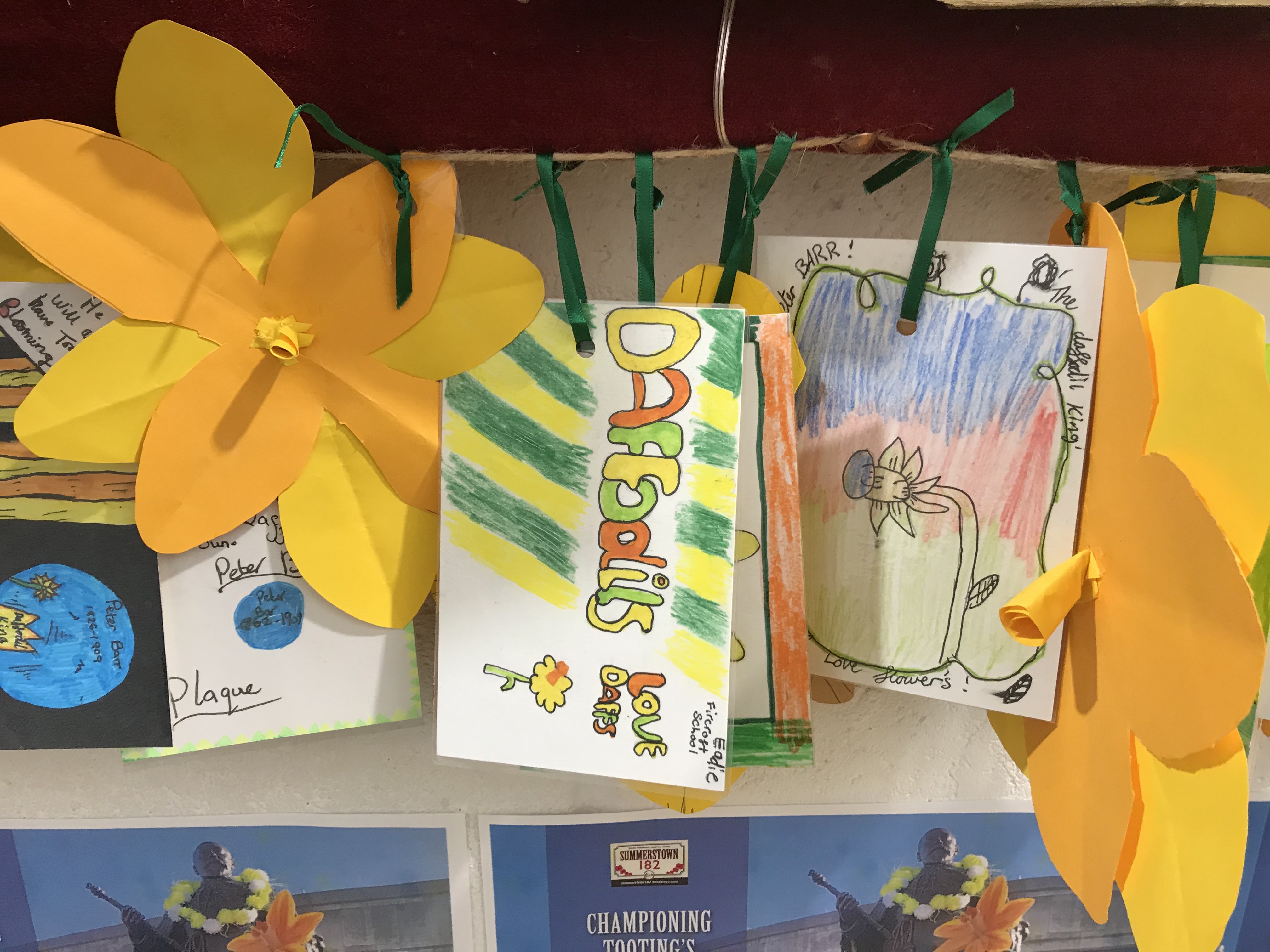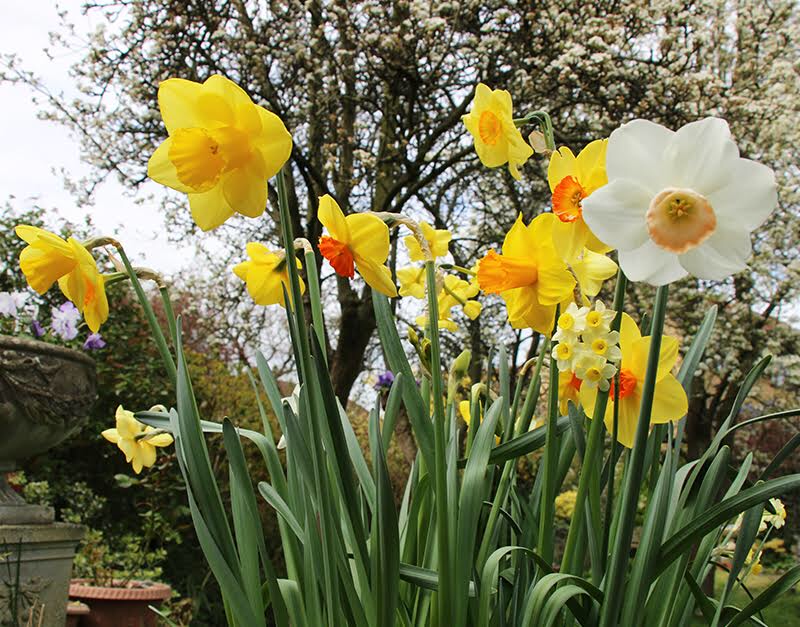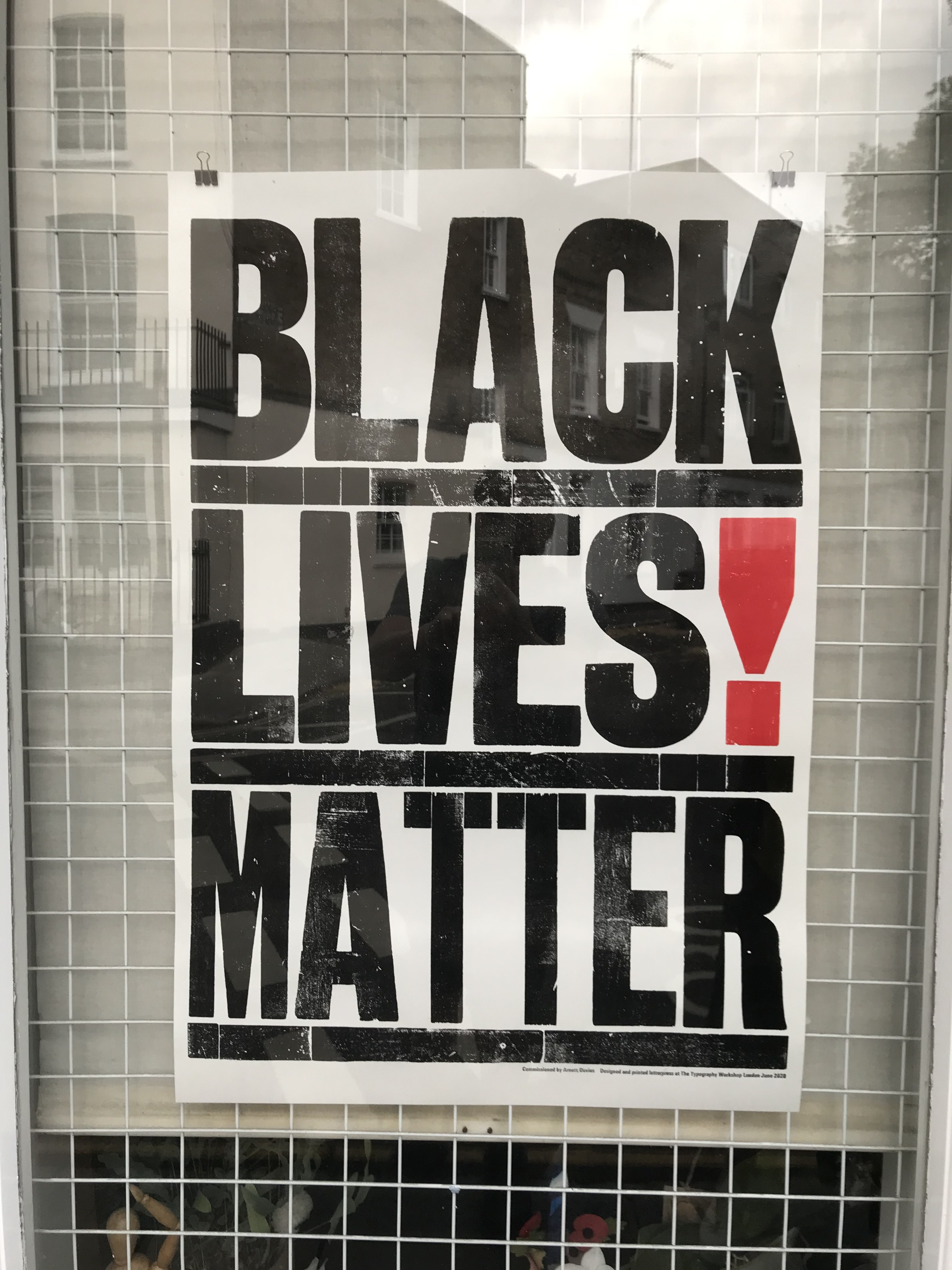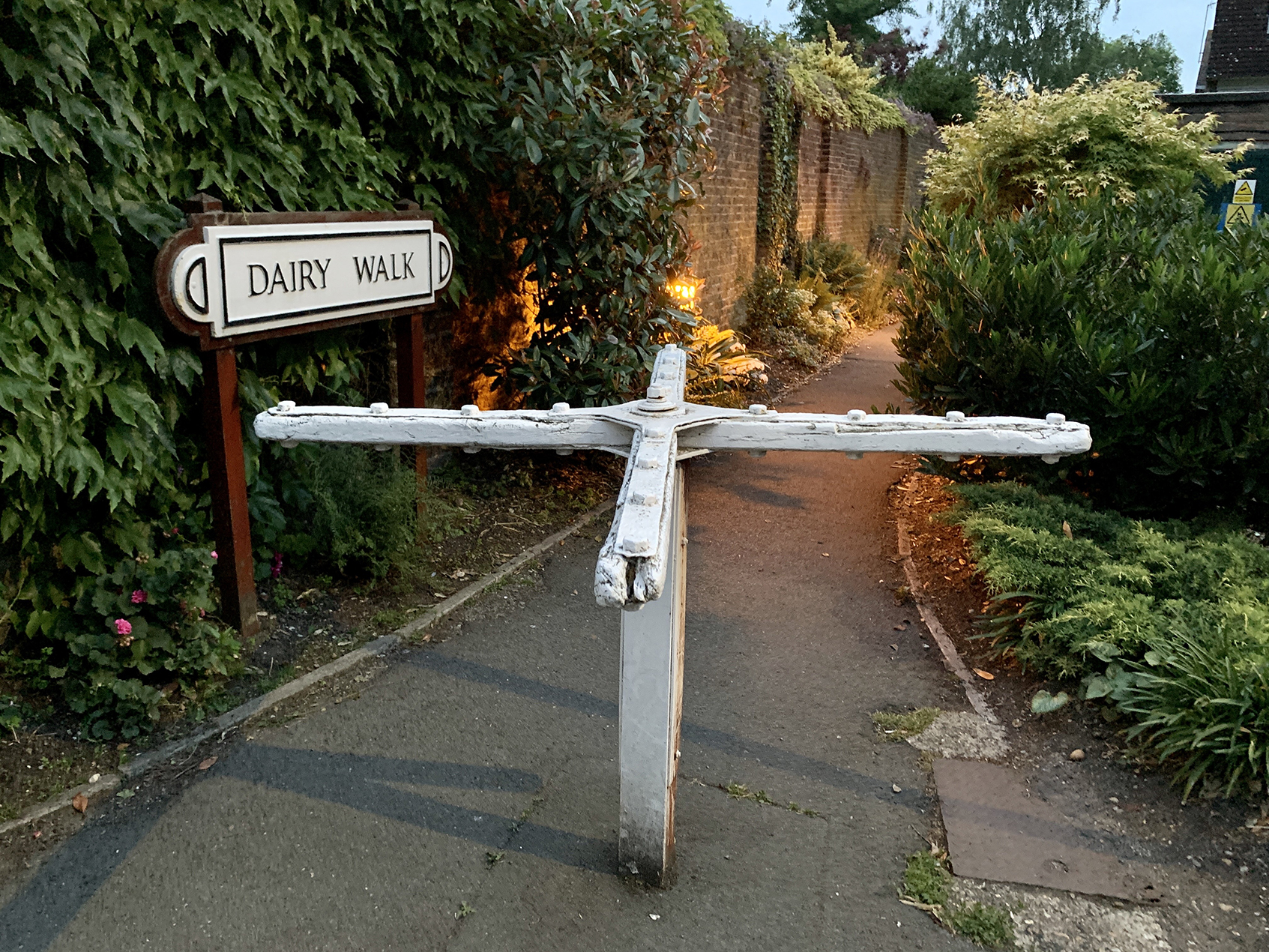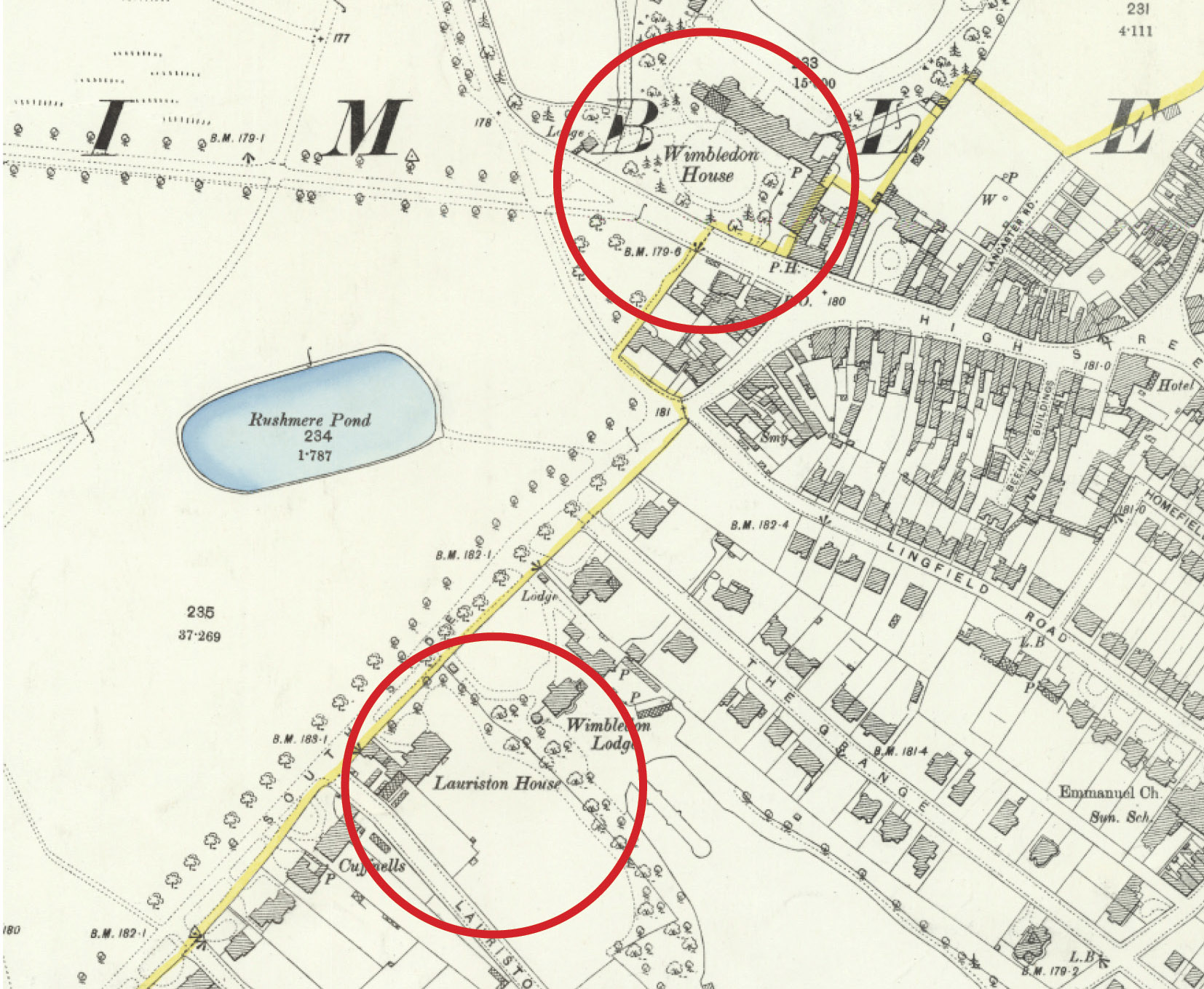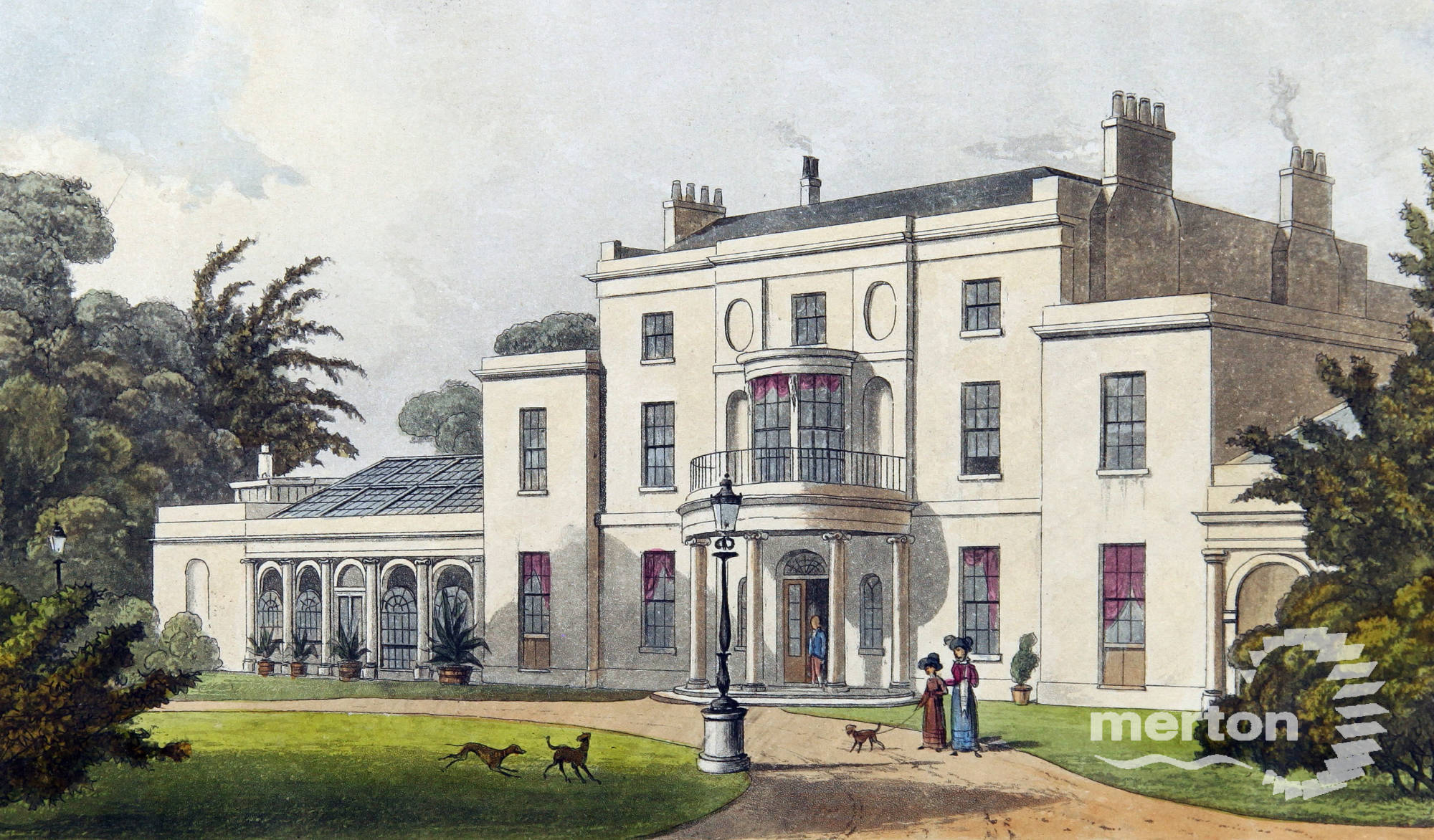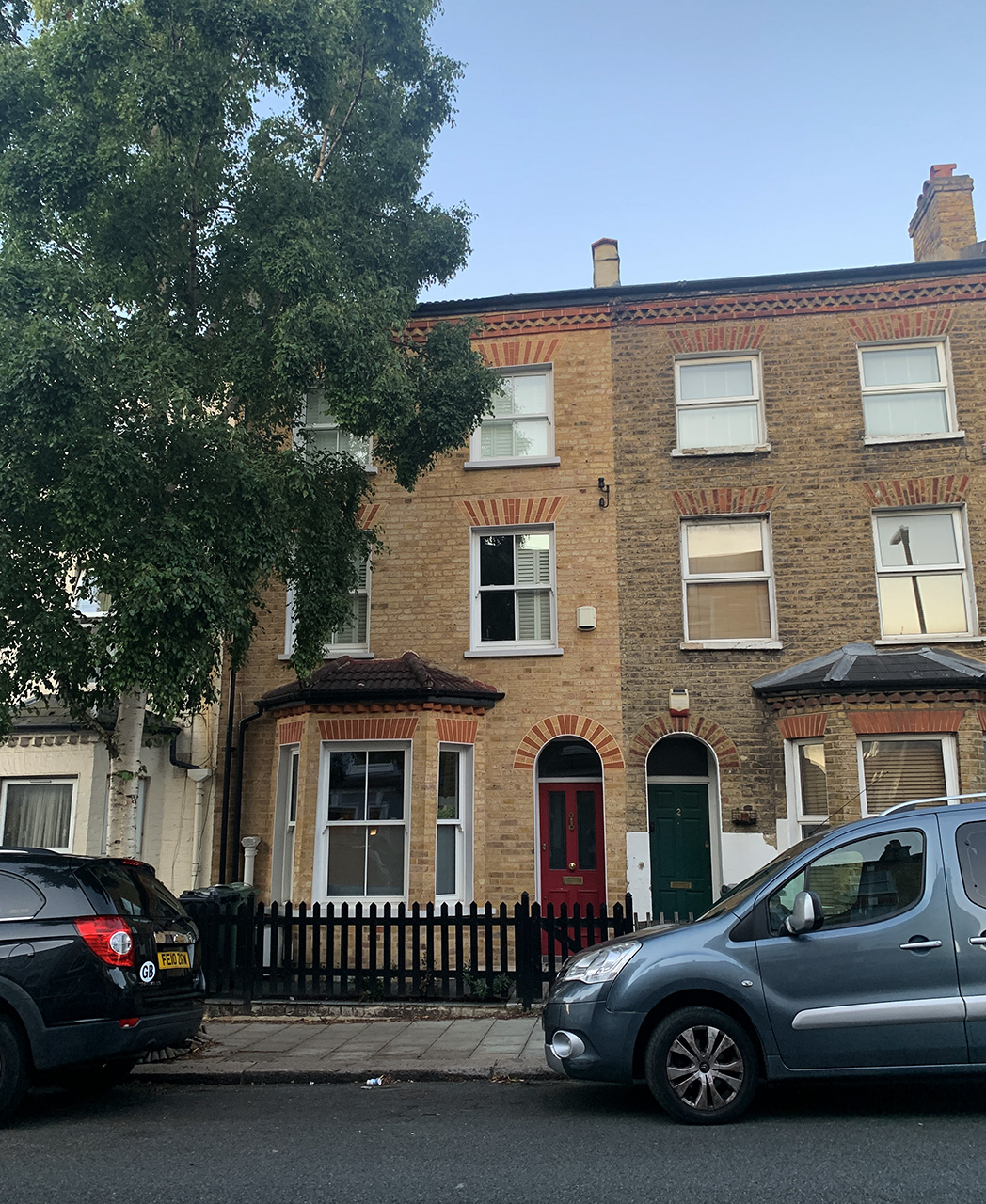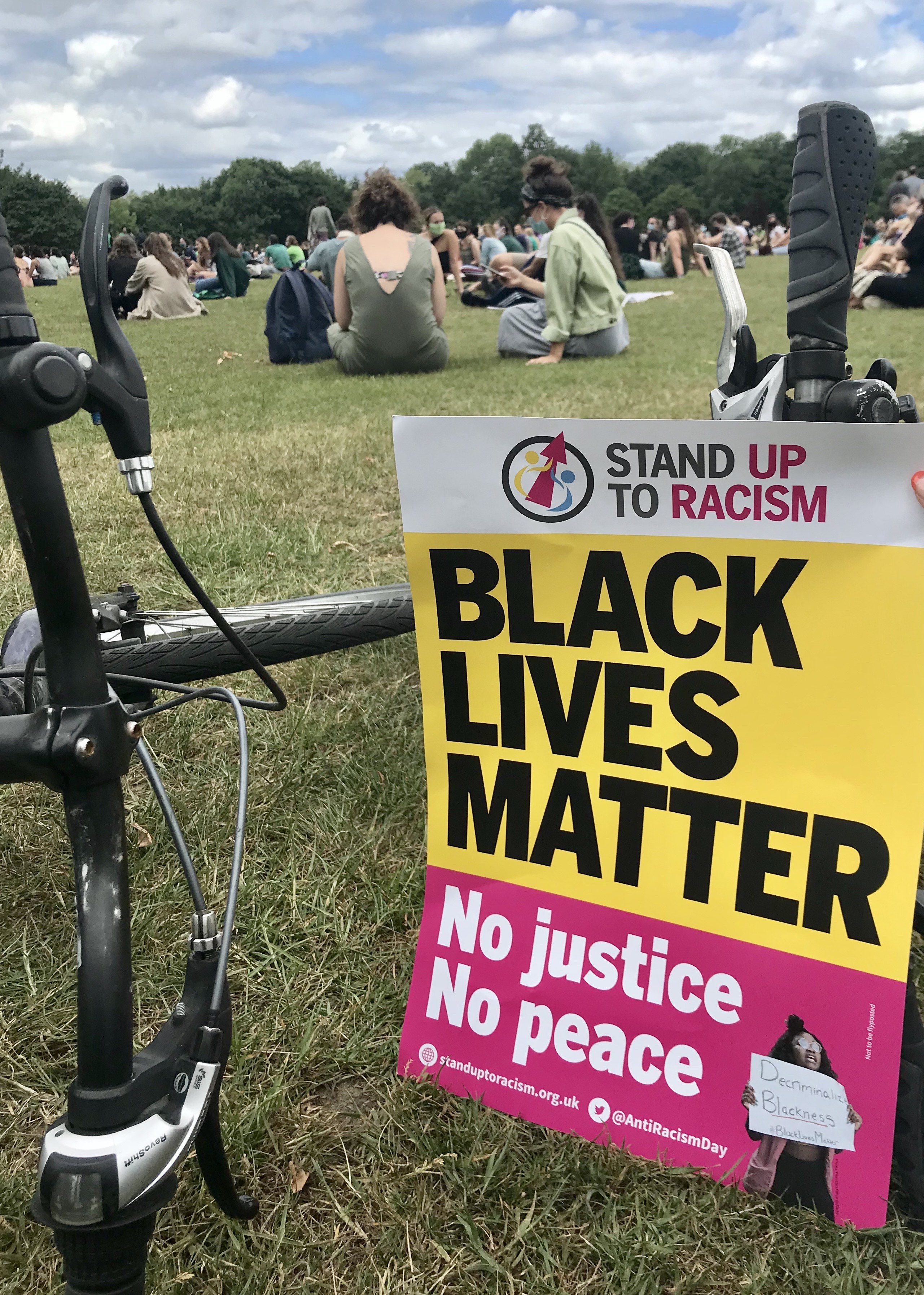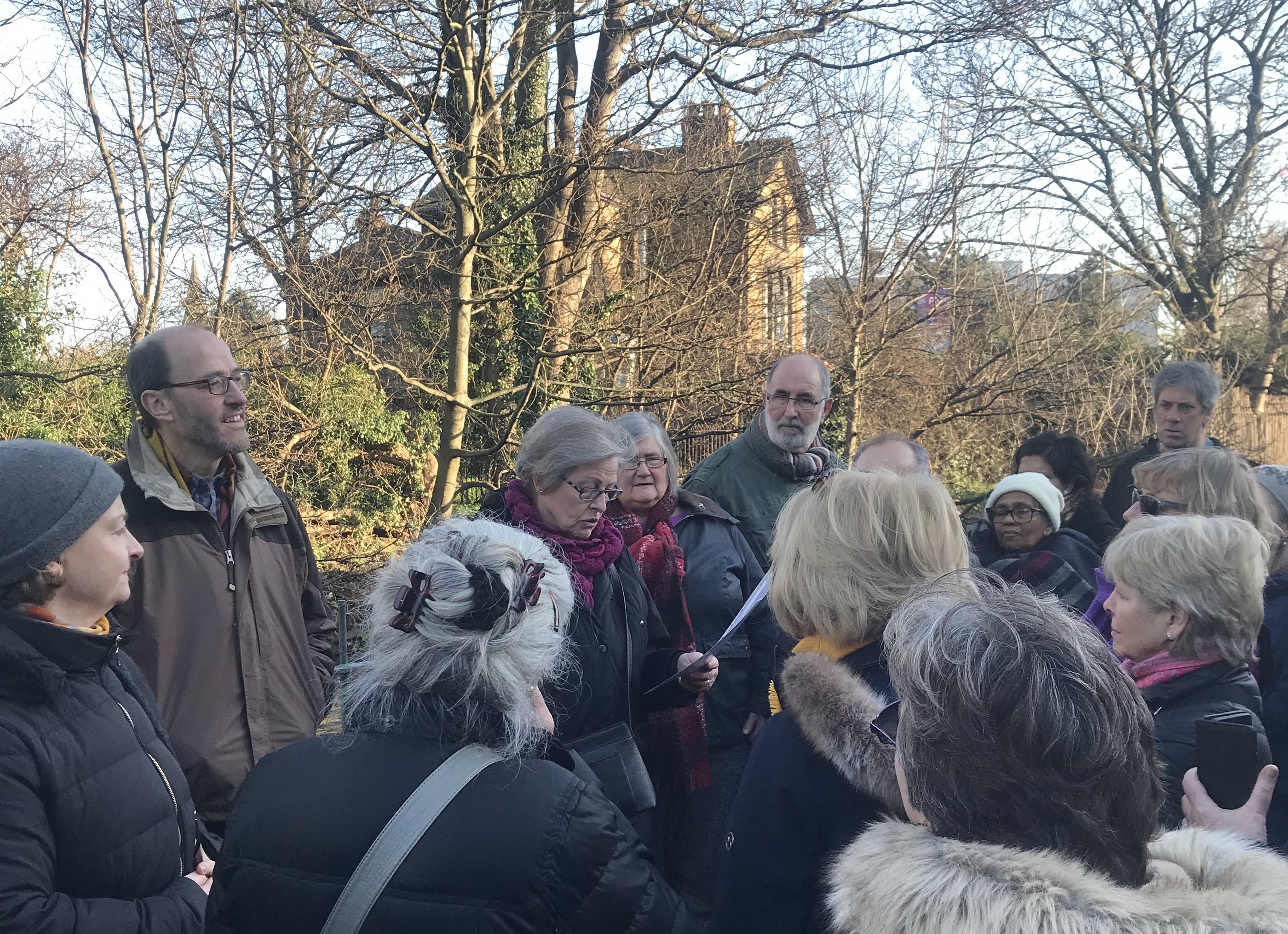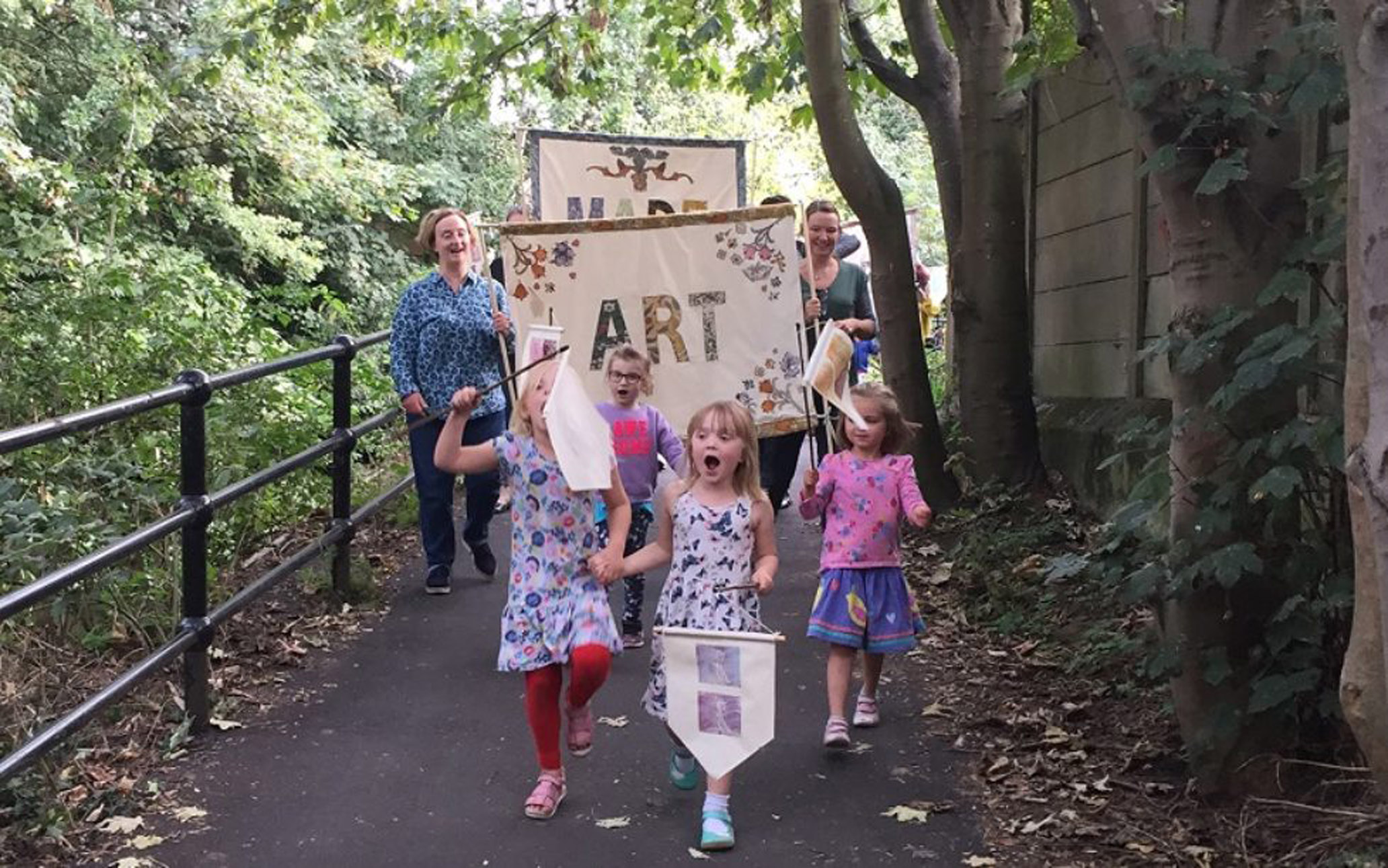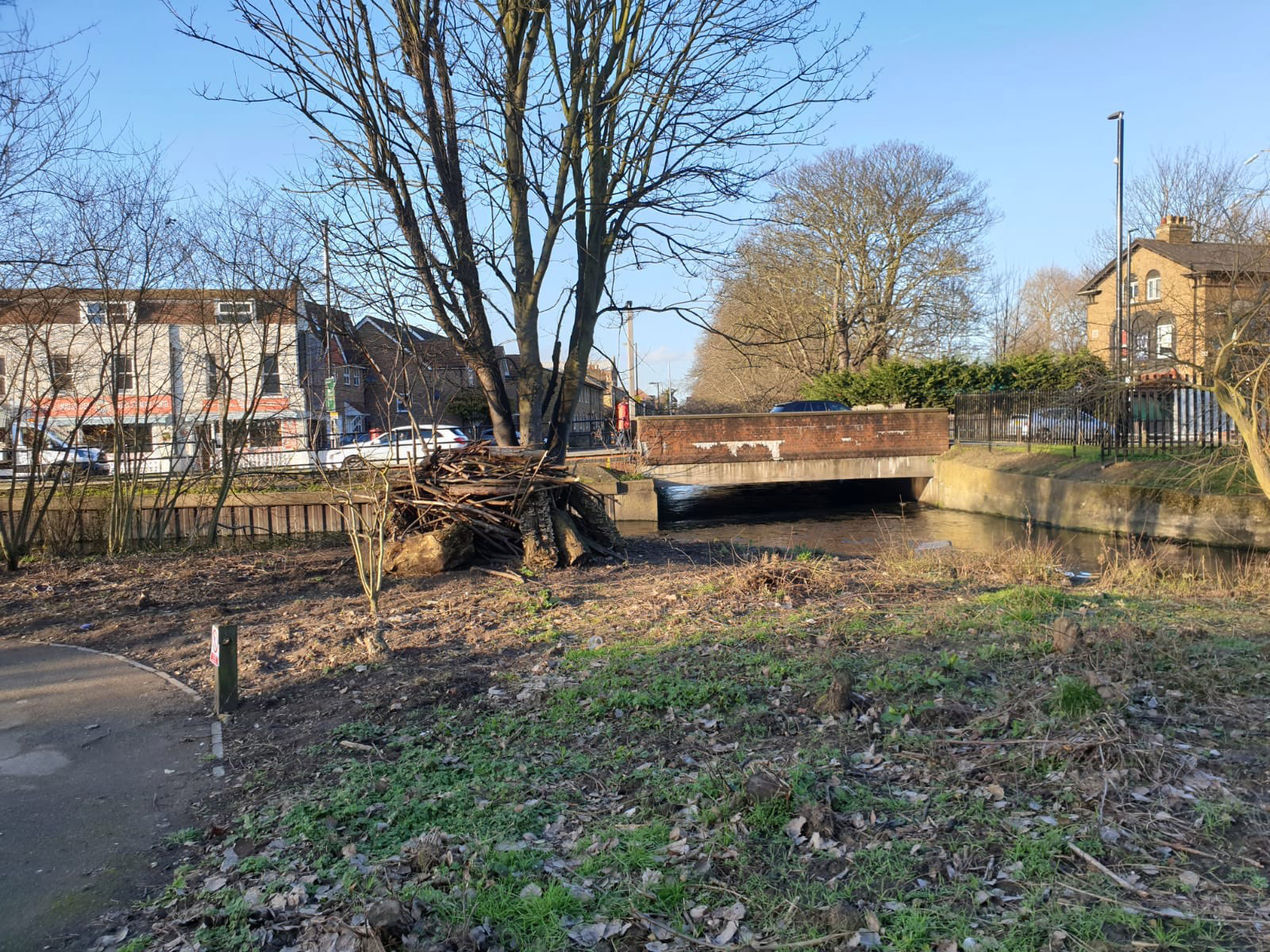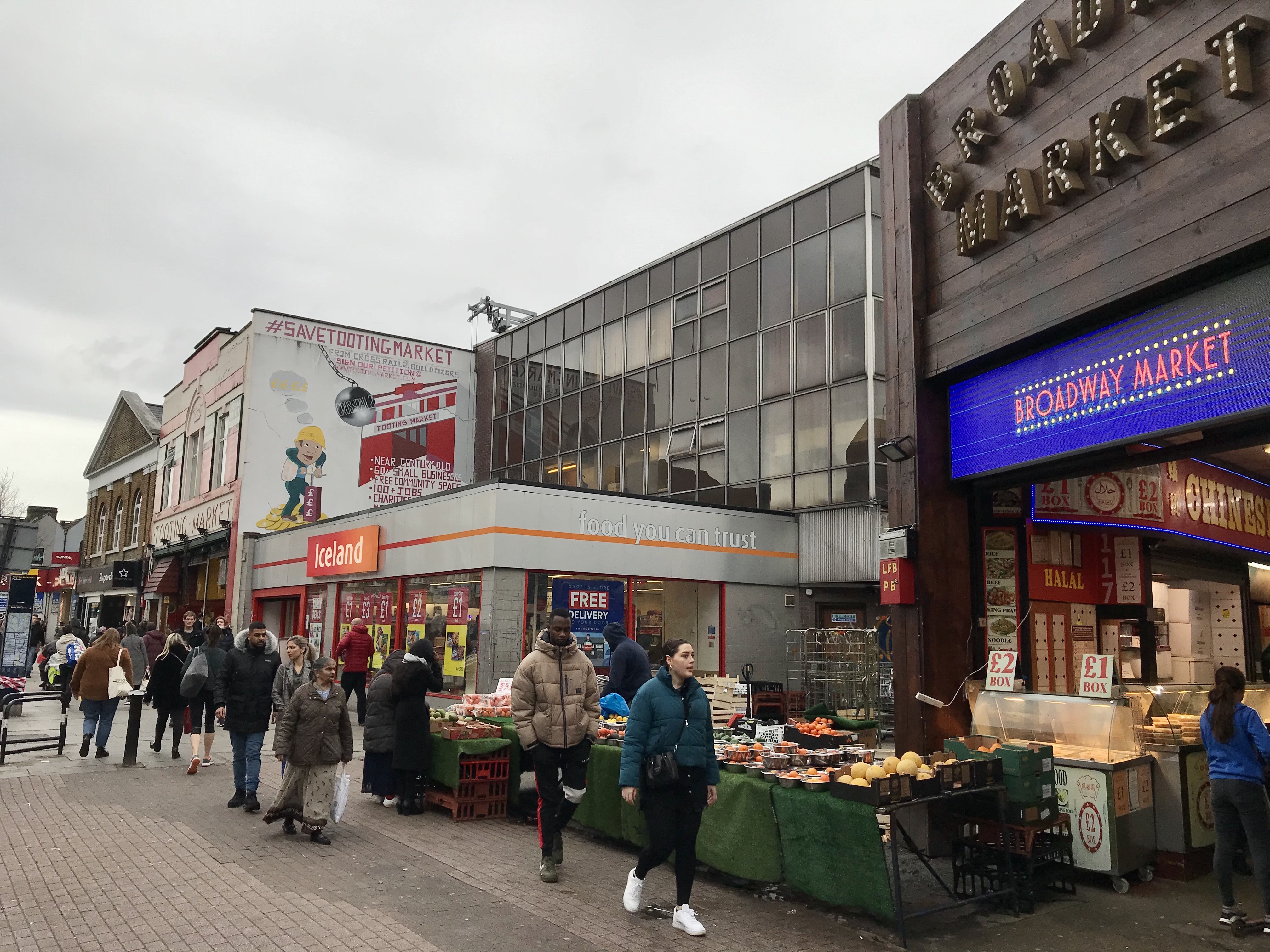


Take a walk down Garratt Lane and ask anyone of a certain age if they remember ‘Barney’s’ and a warm smile of recognition is sure to flitter across their face. Whether its the memory of that first hair-cut and being positioned across the arms of the barber’s chair on Barney’s plank, being presented with one of his lollipops or possibly having him give you a short back and sides with a cigarette dangling perilously close, his name lives on in Earlsfield and will do so for many more years when a historic blue plaque arises on the site of his premises later this year.


A study of Garratt Lane has revealed that excluding the pubs, the premises at No476 may be the location of the longest continuous trade on this historic south London route connecting Wandsworth with Tooting. Before it became ‘Goodfellas’ it was most famously known as ‘Barney’s’ established in 1931 by Barnett Jacobs and run by his family for nearly six decades. I was lucky enough to attend a visit by his late daughter Daphne a few years ago in her 97th year. She ran the ladies salon and her son Stephen has very kindly shared family photos and press cuttings. Barney passed away in 1957 but is still fondly recalled by Earlsfield residents.

A First World War veteran and ARP warden in the Second, he is remembered for his many kindnesses and immense community spirit. In the 1920s the shop was under the proprietorship of Thomas Stephens who was still there in 1930. From at least 1911 a hairdressing business was run here by Percy Goldsmith. Local historians consider this outstanding longevity worthy of a blue plaque and your support is helping make that happen. Geoff will be doing some of his local history tours and donations will go towards the cost. Look out for ‘Walk the Lane’ and ‘Barney’s Wandle Ramble’. If you are popping in for a snip or just passing by, you can also give George a donation. Celebrating our heritage in this way makes Earlsfield a better place to live so thank you all for your support!

So who was this affectionately-remembered character whose name is recalled over 65 years after his death. There’s no doubt that much of the love also stems from nostalgia for a very different, more gently-paced world with many less distractions. Earlsfield was a cosy unpretentious place, lit up by genial characters like Barney Jacobs and his landmark barber’s shop at the heart of Garratt Lane. He most certainly deserved his place in the sun as he’d been in a few dangerous situations in his early life.

Barney was the son of a Lithuanian umbrella-maker from Brick Lane. Schlaime Solomon Jacob Fineman Yankel was one of around 2.5 million Jewish migrants who left the Baltic states controlled by Russia between 1880 and1920. Their communities had been overwhelmed by ‘pogroms’, a wave of state-sponsored murder and destruction which reached its height after the assassination of the Czar in 1881. He married Rebecca in 1891 and Barnett, born the following year was the first of their five children born after they came to London. Many of these settlers had tailoring skills and established businesses in the Whitechapel and Spitalfields area. Barney grew up in the frenetic Whitechapel area, attending Hanbury Street school. Other migrants have since populated this Brick Lane area and it still retains a unique energy and vitality.

He must have taken up his scissors quite young because his naval records indicate his profession as ‘hairdresser’. He really did have quite an adventure at sea, joining the Navy at the age of 17 in 1909 and serving for over ten years. This would have course have covered the entire length of the First World War, though he still found time to get married and father four children.

Barney joined the Navy at the time of a race with Germany to control the supremacy of the seas with new classes of battleship soon to propell both countries into conflict. He trained as a stoker, firstly on HMS Renown, then HMS Jupiter. He was then assigned to a land-based training establishment, HMS Victory II in Portsmouth. The 1911 census records him as a 20 year old stoker on HMS Assistance, a repair ship based in Portsmouth. On 6 May 1912, just a few weeks after the sinking of the Titanic, he married Elizabeth Jacob in Weymouth. Known as Bessie, she was originally from London but working in service in Dorset. Their four children were; Cyril born 1913, Ronald in 1915, Eric in 1918 and Daphne in 1921.

Fortunate to avoid the horrific Battle of Jutland, Barney spent much of the War on various repair ships at Scapa Flow, the Naval base on the Orkneys, where the German fleet was scuttled in June 1919. He was assigned to HMS Assistance and HMS Greenwich and from August 1916 HMS Victorious II. His son Eric’s birth certificate indicates that in August 1918 he was serving on ‘HMS Daphne’ which was involved in mine clearance work. His family were living in Melcombe Regis, just outside Weymouth. In 1921 Barney and Bessie had their fourth child, they named her Daphne after this ship.

Times were tough as a new decade dawned but after all that time away from his young family, it must have been a difficult decision to go straight to Ireland and join the Royal Irish Constabulary. This was the time of the Irish War of Independence and the local RIC police force were boosted by recruits from England. Barney was now on the same side as the hated ‘Black and Tans’ and a deadly enemy of the revolutionary movement whose guerilla war had the support of the vast majority of people. His arrival in July 1920 coincided with some of the most intensive interactions between the IRA and Crown forces. Barney was based in County Clare in the small town of Feakle. Resistance to British rule was particularly vigorous in this area, a very dangerous place for someone in a British uniform. In December 1921 an uneasy truce was drawn up as the country was partitioned with the creation of six-county Northern Ireland swiftly followed by a vicious Civil War between those in favour of it and those against. The RIC was disbanded the following year and Barney returned to England. When living in Earlsfield he may have been aware of local graves connected to this conflict. Arthur Kenward, an English RIC officer and Lieutenant Henry Genochio are buried in Streatham Cemetery. The grave of Lieutenant Henry Angliss, a member of ‘The Cairo Gang’ killed on the orders of Michael Collins on Bloody Sunday is in Earlsfield Cemetery.

Barney did well to get out of Ireland in one piece. Back on the mainland he appears to have settled with his young family in Weymouth for a couple of years. There is a story that he may have set up a barber’s business there but been let down by a business partner. For whatever reason, he and Bessie next appear on the electoral rolls in Battersea from 1925, living at 102 Meyrick Road, just north of Clapham Junction. Things around there would not have been a great deal calmer than revolutionary Ireland. A solid working class industrial area, packed with tight-knit streets filled with workers serving the giant Thameside factories; Morgan Crucible, Price’s Candles, Garton’s, various gasworks and distilleries. Barney’s young family removed from the gentle south coast, must have been shocked to enter this overcrowded world of tall chimneys and grim factories belching out pollution. ‘Red Battersea’ with a street named after a Boer general was also highly politicised, an area that stood apart and knew how to fight for its rights. Having produced John Burns, John Archer and Charlotte Despard, its latest political giant was Shapurji Saklatvala, elected Communist MP in 1925 and imprisoned during the General Strike. Support for the Strike was solid and the area was ring-fenced by military as the country teetered on the brink of revolution.

Just one stop down the line from Clapham Junction but a world away, things were always going to be a little calmer a few miles away in more sedate Earlsfield. Perhaps for that reason Barney and his family came here in 1931, alighting at the hairdressers at 476 Garratt Lane. His teenage family would have been at the stage where they were thinking about careers and a family business was a great opportunity for them to work together. Barney’s father passed away in 1932 so he was now embarking on a new and exciting phase of his life.

This section of Garratt Lane was a lively stretch with shops and businesses of every kind to cater for its growing largely working-class family-orientated community. Larger industry like Hunt Capacitors and Benhams was more at the Wandsworth end of Garratt Lane, the area north of the railway line renowned for its costermonger community and Romany heritage. In Summerstown, alongside the Wandle was a belt of light industry providing many jobs for local people; Stevenson’s box factory, Masson and Scott and Elm Works. In the 30s the Council took over the building of the Magdalen Park estate allowing more people to settle. An eleven minute trek to Waterloo made it the perfect spot for commuters to settle down and raise a family. The Leather Bottle pub and its bowling club were a social hub and the Deerhurst Club and the snooker hall were very popular. The nearest cinema was the Premier Electric Theatre, renamed the Rex and located just past the station. There were four schools close by and an imposing police station built in 1914 gave everyone a sense of security. Wimbledon Stadium had opened in 1928 and the 1930s were the sport’s golden era bringing crowds of visitors to the area, many arriving at Earlsfield Station passing Barney’s on their way to the dogs. Earlsfield was a solid straightforward area which lacked the swagger of Tooting with its Market, cinemas and lively pubs. A look at the street directory of 1940 shines a light on some of Barney’s neighbours.

He was sandwiched between Hewlett’s newsagents and Miss Beatrice Bowles’ grocery store at 478. This must have been convenient for picking up snacks and reading material for punters waiting for a trim. On the corner, currently the much-loved Elena’s Cafe was Leslie Jobson’s dining room with the Woodland Dairy next door. A little further along, Mr Willows ran his ‘fried fish shop’, still going strong as the popular ‘Sea Horse’ – surely the best chippy on Garratt Lane. The chinese takeaway at 466 was Albert Foster’s sweet shop. The off-licence on the corner of Steerforth Street was still there with the superbly named ‘Canine Defence League Clinic’ a few doors further on.

On the opposite side of the road the changes were more apparent. Directly opposite Barney, the current wedding dress supplier at 621 which went on to be the legendary ‘Ace Supplies’ hardware store, reputedly the model for The Two Ronnies’ ‘four candles’ sketch. At that point it was Mr Carlton’s cycle dealers. Next to there was Daniel Lloyd’s ‘ham and tongue’ dealer followed in succession by a drapers, butchers, fruiterer and fishmonger. Many thanks to local resident Maggie Gilbert who took the precious Garratt Lane street scenes featured here in the mid-80s.

At 633, Sidney Bruce’s boot and shoe repair business lasted until the late 90s. Look carefully and you can still see the green paint around the fascia. Next to that was Robert Vise, ladies’ hairdresser, providing a bit of competition for Daphne at 635. That was still going in the late 80s as the exotic sounding Gemelle Hair Design. Heading towards Earlsfield Station, what is now Domino’s Pizza at 617 was James Stevenson’s bakery and next door to that, another competitor for Barney was Percy White, working as a hairdresser at 615.

A little further down, things get very exciting – at 577, Mabel Bown a photographer in the First World War period was still going strong, her premises are now a nail bar but back then were also the HQ of ‘Earlsfield Dancing Academy’. You can see her name on the awning in this famous photo of the newly formed Wandsworth Battalion marching past in 1915.

Down the road in Summerstown, another rival in the barber business was Albert Kirk at 715 and William Slingerland at 747 whose family have shared the lovely photo above. Their shop was next door to the Stadium Café, most recently a branch of Ladbrokes. Essentially this self-sufficent pre-supermarket era cluster of businesses meant that no one had to shop too far from home. Note the poster on the left advertising ‘greyhound racing’ at the recently-opened stadium. It was all there for them on this one sliver of mid-section Garratt Lane, though a bit further towards Earlsfield station were branches of David Greig, Victor Value and Boots. Times were changing though and in 1930, just a mile down the road Jack Cohen, whose family had a similar Whitechapel Jewish migrant back-story to Barney, was setting up his first market stall in the new Tooting Market. He was of course the founder of Tesco. Both First World War veterans, its fascinating to wonder if the two ever had a chat.

Into this cosy self-sustaining commuter homeliness, the Second World War came crashing. Earlsfield suffered with some small but high-profile incidents which would have shaken the community. Barney was a Warden with a post in nearby Garratt Park. In September 1939, half a million children were evacuated from London, including young Michael Aspel living at 42 Isis Street. He wouldn’t see his four year old brother Alan for five years. Some of the shops on Garratt Lane had their basements heavily fortified with concrete floors and extra strong timber supports to provide civilian shelter. One of these was the Sheehey’s Bonbon sweetshop at 420, now Mr Patel’s newsagents. In the early days of the Blitz, several high-explosive bombs wiped out a terrace of shops at the junction of Garratt Lane and Burmester Road opposite the Prince of Wales. In November fire stations were hit at West Hill and in Balham, killing 20 fire personnel. A few days after the Balham tube disaster, a bomb on the night of 17/18 October 1940 destroyed Waldron Road School, opposite The Leather Bottle and a stone’s throw from Barney’s home. A Home Guard was formed and the below photo was taken in Garratt Green with Franche Court Road in the background. It shows men who Barney Jacobs would surely have known.


In the summer of 1944 the rockets came down fast on south London. If you walk down Summerley Street from Garratt Lane you pass some of the finest old Victorian houses in Earlsfield, but about half way down on both sides the houses are all post-war. Next to the Wandle, a large number of houses close to the railway line and at the end of Skelbrook Street were destroyed by a V1 in the summer of 1944. Presumably the main target being the railway line. In June, a V1 landed behind the Anglo American Laundry, killing six people. St Gregory’s Roman Catholic Church was hit twice and had to be rebuilt. Only the sign over the entrance on Garratt Lane remains from the old church.

Wandle School was severely damaged by a rocket on Penwith Road and there was another on Wilna Road. The worst incident though was on 19 November when 35 people including 14 children were killed by a V2 rocket in Hazelhurst Road, directly opposite Smallwood School. All this would have placed great strain on local people. Barney would very likely have been on call at so many of these. The role of Wardens like him and Thomas Holloway was crucial in keeping morale as much as trying to ensure that people were safe. A very vivid account of her Second World War memories growing up in Earlsfield was recently written by Sylvia Morrison (nee Partleton).

Near the Leather Bottle was a Salvation Army Mission Hall and a small spiritualist Church The family of local resident Arthur Newbon serving in the army and captured by the Japanese received a War Office missing in action presumed dead telegram. Despite several confirmation communications, his Mother Rhoda had a strong feeling he was still alive. She went to both places and they told her this was the case. He finally returned at the end of the war having been a POW on the Thailand Burma Railway.

Barney and Bessie, as Elizabeth was known, appear to have been pillars of the Earlsfield community. The above photo was taken in Weymouth in August 1954 when he was 62. Business thrived in the fifties as the post-War gloom lifted. Barney and Bessie might even have been tempted to take a bus down Garratt Lane to the Tooting Granada to watch Frank Sinatra’s first ever UK appearance.

Speedway was the next big thing, attracting huge crowds of up to 40,000 people at Wimbledon Stadium. There was even a cycle version on a track in Garratt Park with Winifred Atwell handing out the prizes. Incredibly the gravel circuit survives to this day, a useful spot for young children to learn how to ride a bike. There’s nothing to indicate its exciting previous existence.



Winifred Atwell opened her own hair salon in Brixton around this time, maybe getting a few tips from Daphne along the way. Barney was a regular in the Deerhurst Club, on the corner of Steerrforth Street, throwing darts or on the billiards table. For over ten years he was Secretary of the Hospital Savings Association and the club displayed a special certificate he was awarded. For the last 25 years the site has been the home of a doctor’s surgery.

Barney carried on at the shop until July 1957 when ill health caused him to step back. His death at the age of 65 made the front page of the South Western Star newspaper in December that year. Bess would live on at 476 with Cyril before moving in with Daphne’s family until she passed away in 1983.

The newspaper described how he was a real friend who very often cut people’s hair for free and would home-visit older customers who were too ill or frail to go to the shop. It also mentioned his Second World War service ‘No matter where or when the bombs fell in the vicinity, Barney somehow always seemed to be on the spot giving words of encouragement to the victims and worrying about his own safety least of all’.

With Cyril now at the helm, the shop carried on for over thirty years. George Yiolides took over the reins at Goodfellas in 2016. He really appreciates the heritage of the shop and was thrilled to welcome Daphne and her nephew Stephen to the shop in 2018. Here she met up with long-time customers like Alan and Russell who remembered Barney. It was great to get their visit featured by a local newspaper. After Cyril’s retirement 476 was run by Tony who eventually sold it to Savvas who named the business after the hit Martin Scorcese gangster film.


All are welcome to join me for ‘Barney’s Wandle Ramble’ on Saturday 9th September, climaxing in a plaque unveiling ceremony outside the shop. What a great moment, not just reflecting on Barney Jacobs and a business that has survived so many ups and downs and still thrives after more than a century but also the power and value of people who quietly contribute so much to the community. The plaque indeed celebrates all small, independent businesses who have been through so much in recent years and continue to add personality and character, brightening our lives through their presence on what would otherwise be a very dull homogenised high street. Barney, George, Daphne, Cyril, Tony, Thomas, Percy and all the others, we salute you!



